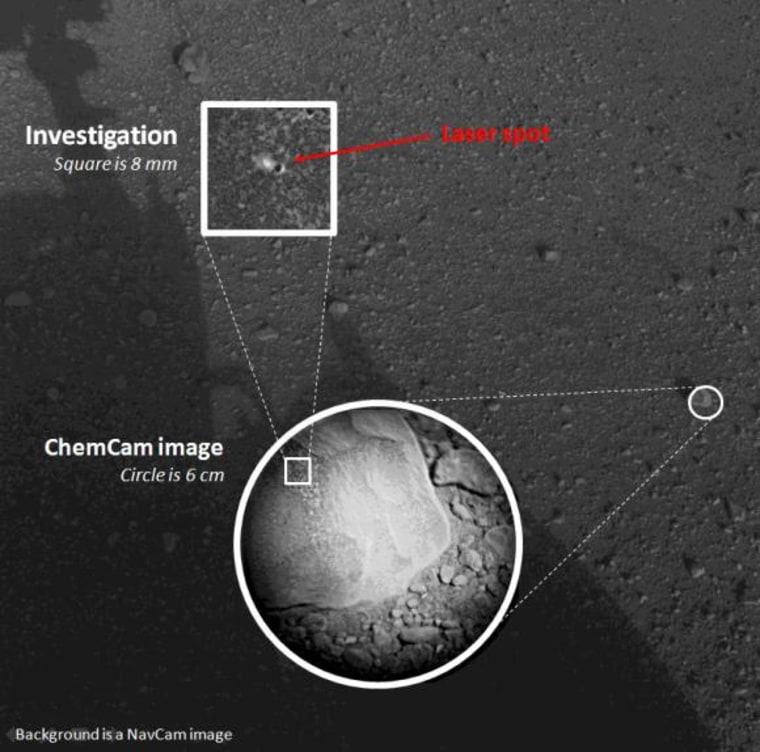NASA's Curiosity rover has zapped its first Martian rock, aiming its laser for the sake of science.
During the target practice on Sunday, Curiosity fired 30 pulses at a nearby rock over a 10-second window, burning a small hole.
Curiosity's social media team made a reference to Austin Powers when it tweeted, "Yes, I've got a laser beam attached to my head. I'm not ill-tempered; I zapped a rock for science." Then it signed off "#PewPew," a nerd reference to the sound lasers make when discharged.
NASA also released a report describing the laser test. The rock was "fist-sized," and was designated "Coronation." It was, says NASA, "the first rock on any extraterrestrial planet to be investigated with such a laser test."
"Each pulse delivered more than a million watts of power for about five one-billionths of a second," the report continues. "The energy from the laser excited atoms in the rock into an ionized, glowing plasma."
While this was principally a target practice maneuver, NASA says it may prove to have scientific value, if it reveals details of the rock's characteristics.
Since landing in Gale Crater two weeks ago, the six-wheel rover has been checking out its instruments including the laser. During its two-year mission, Curiosity was expected to point the laser at various rocks as it drives toward Mount Sharp, a 3-mile-high mountain rising from the crater floor.
Its goal is to determine whether the Martian environment was habitable.
In several days, flight controllers will command Curiosity to move its wheels side-to-side and take its first short drive.
The $2.5 billion mission is the most expensive yet to Mars.
The Associated Press contributed to this report.
